In June 2009, I started on what seemed to be the craziest begonia collecting spree ever in all my gardening chapters. That one little untold story of how I came to this obsession, still lingers in my mind whenever I look at those unmistakable leaves huddling against each other in the shade. But to cut back on the tedious storytelling, fast forward to the present, where everything old and new mingle under rain and shine.
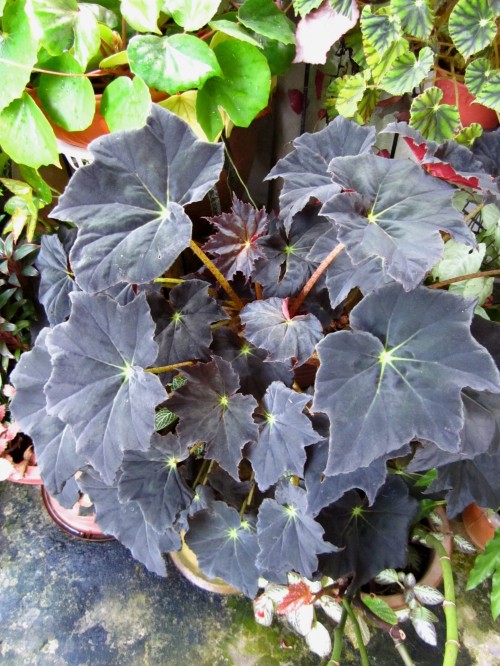
Begonia 'Black Velvet'
This happens to be my favourite specimen in the collection (above). It’s one of the first plants that I had acquired back in mid 2009, when it was a single small shoot growing on a thick coil of rhizome. It fed on plenty of chicken dung fertiliser for the past few years, happily exerting its growth forwards and sideways since then. It turned out to have amazing revival capabilities, for instance, when the weather got too warm on a certain day and being in a rush to go to work, I had forgotten to give it is morning wetting down. When I came home in the evening, the plant was in such a dismal (with leaves and stems draped over the side of the pot in a laxed octopoid appearance, say no more) that the first thing I thought of that there was no hope for the plant to revive itself, stems and all. I quickly doused the plant with standing rainwater (made lukewarm by the heat of the sun) and hoped for the best. By tomorrow morning, the plant was back in its original state, as if nothing happened the day before. Needless to say, this plant became a reminder to me to water my plants every morning before going off.
-
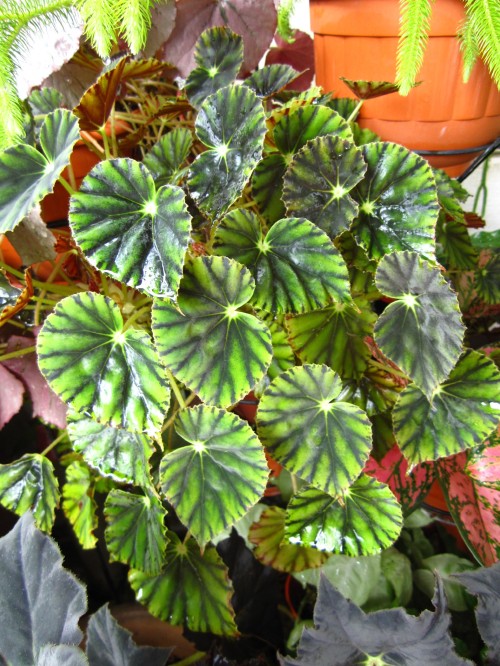
Begonia mazae f. nigricans
This is a lush plant (above), spreading in a neat sphere as far as it could go. It behaves exactly in a growth manner similar to B. ‘Martin’s Mystery’ (supposedly also with bowerae parentage), albeit a green striped version of it. Already there are 4 plantlets waiting to be relocated to the shed after another 2 weeks of growth under awning conditions.
-
-

Begonia 'Martin's Mystery'
Martin (above) comes in 3 interchangeable colour forms. It’s pink and loosely packed in light shade, red and compact growing in full sun, and silvery green in deep shade . It can grow in between rock and brick crevices, forgives inconsistent watering and propagates like there’s no tomorrow. What more could one want in a begonia?

Begonia 'Maurice Amey'
This is another old favourite (above), but it needs to be replanted every year when it deteriorates into a mush of leaves and stem during the rainy season. This angelwing variety appears to be at its prime come March to August in Malaysian tropics, when the weather turns viciously sunny and watering makes well for twice a day. My mother frequently refers to him as Maurice.

Begonia hybrid Noid
A recent purchase (above), which I find is more robust compared to the new version with scalloped leaf edges (Begonia ‘Black Dragon’). It is still in the experimental stage of growth and I expect it to double in growth in the next few months.
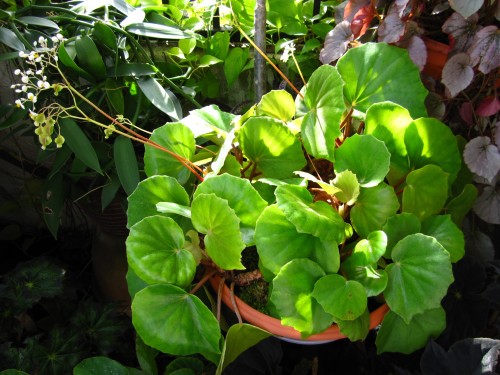
Begonia floccifera
I just love Mr Flocci here (above). Plant him in overly wet soil and he still grows. Two days of hot dry rainless weather with very little water and he’s not complaining. Another perfect beginner specimen to befriend if you are looking for one.
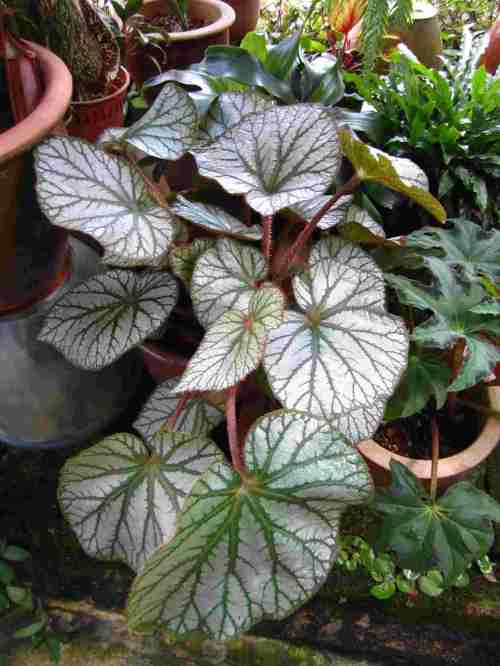
Begonia 'U400'
Of course, how could I have forgotten this beloved specimen (above), the name sounds like it came from a line of ‘android’ hybrids. It’s been over a year since, sharing the space with a neighbouring B.heracleifolia. Another stunt puller that deflates and revives in many a forgotten watering task (DO NOT ATTEMPT TO TRY!!) Doubtless, this one loves an exceptional dose of chicken dung pellets, provided if you do the honour of soaking them soft in water first before serving.

Begonia 'Silver Jewel'
This is also a year old specimen (above), but living under 75% shade of the awning I didn’t think it was possible that it would pull through. During the first six months, the plant was constantly rotting here and there, with soggy stems dangling over the edge of the pot. After that it seemed to get tired of staying static and there was a sudden burst of growth despite the same watering schedule and lack of bright light. To investigate the mystery, I had gotten another specimen where I placed it under 50% shade (black netting) hoping to see any difference in growth and wellbeing of the old plant compared to the new plant (below).

Begonia 'Silver Jewel' (B.imperialis x B.pustulata)

Begonia rex
Begonia rex (species) is the grandaddy of all existing begonia rex hybrids (above). Its Malay name is ‘Tapak Melati’ and is originally a plant from Assam, India but somehow found itself growing in rural regions of Malaysia as well. I grew this plant from a bit of rhizome and two leaves. It is quite difficult to induce growth of small cuttings but once it passes the plantlet stage the plant surges out leaf after leaf, each bigger than the last. A fun plant to experiment with under different conditions but generally does not tolerate stagnant wet conditions especially in the growing media. Which gives me food for thought if the traits of this plant has been passed throughout all the rex hybrids (aren’t they well known for hating wet media?)
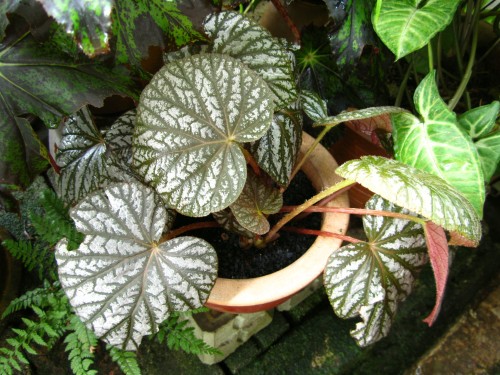
Begonia U501
Finally!! The U501 (above) that has eluded me for too long and made me go on a wild chase for this bugger!!! It may not seem to be that special to most of you but here in Malaysia, anything that resembles a U400 or its related parentage that appears in a random nursery is like seeing a tiger walking on the street. They were on sale at a local shopping mall nursery and I didn’t think twice of snapping all four pots up priced at MYR4 (USD 1.3) each. All were mere 5 inch tall plants, looking limp and sorry in their individual containers that I simply had to bring them home and nurse them back to good health!! The shot above was taken yesterday, a newly potted up plant.
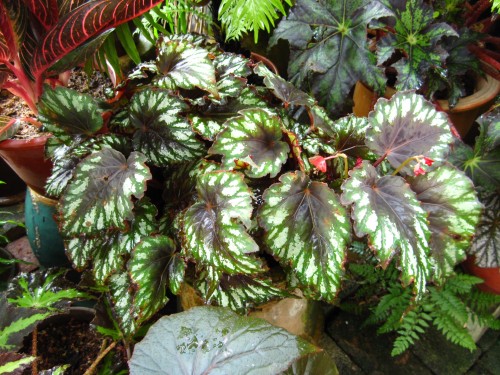
Begonia 'Helen Teupel'
This classic favourite is another newcomer to the collection. In nurseries across the Klang Valley, they seemed to be everywhere, under and on top of benches, hanging in sheds, hiding behind the garden shed door, one or two pots here and there. I managed to bring this home at an attractive price of MYR 10 (about USD 3). There were six mature growing points in the clay pot. Seems like a prolific and durable plant (while it lasts) but we shall have to wait and see.

Begonia 'Gryphon'
I have been told that this is one of the latest hybrids in the international begonia market. It is supposedly hardy and can withstand a reasonably wide range of temperatures and watering schedules in both tropical and subtropical climes but I wasn’t prepared to take risks with this one, as it apparently scared me the other day during transfer to a bigger pot, threatening suicide with its leaves and stem mimicking that of the Black Velvet during its dehydration crisis. It was after all, an unnecessary scare, as it has fully recovered (although new leaves are still droopy and vulnerable to heat shock).

Begonia acetosa
This guy (above) reminds me of flying saucers in a massive invasion attack. It tolerates dry conditions well and also has no complaints (so far) of rain and tap water dripping onto the velvety leaves. Another plant to observe and learn from at this time.
And a whole host of unidentified hybrids (below). I would really appreciate it if anyone can confirm what I have so far suspected them to be called.
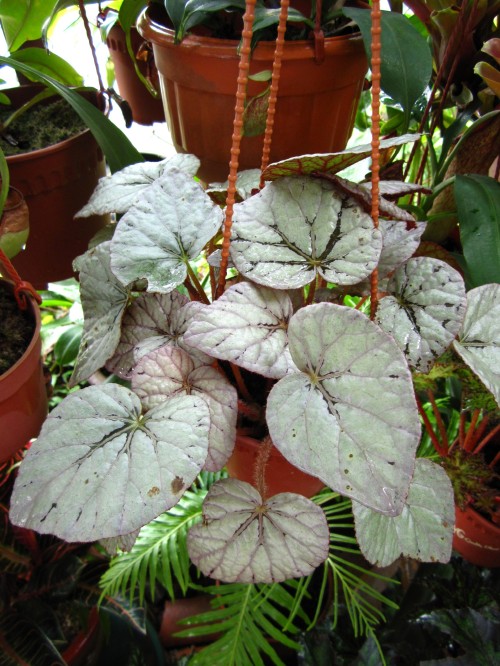
Begonia 'Silver Dollar'
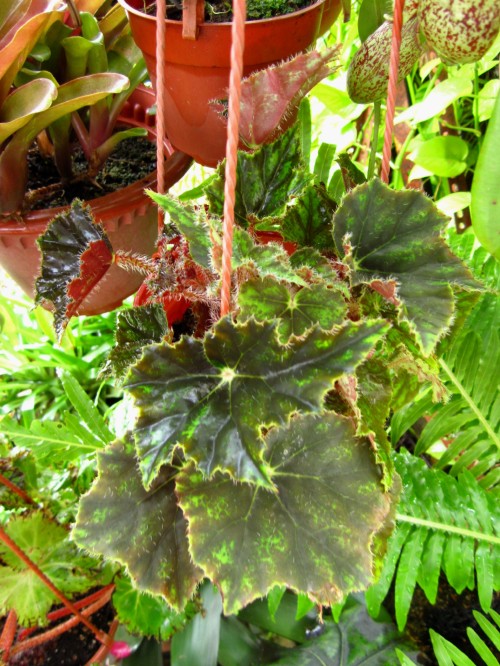
Begonia 'Bethlehem Star'
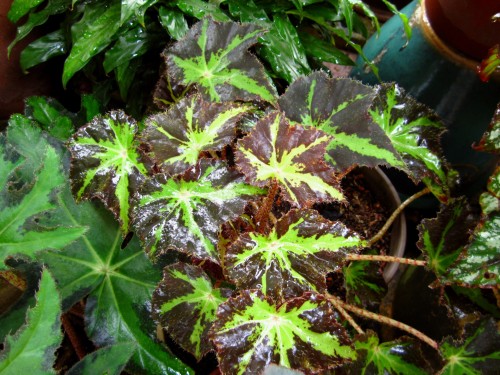
Begonia 'Chivalry'
And last but not least, the ‘Tiger Kitten’ (below), a cute compact miniature variety, though prone to bouts of leaf rot due to their upturned leaves which collect droplets after watering. I have shifted this plant to the shed where it is grown overhanging some water ferns.
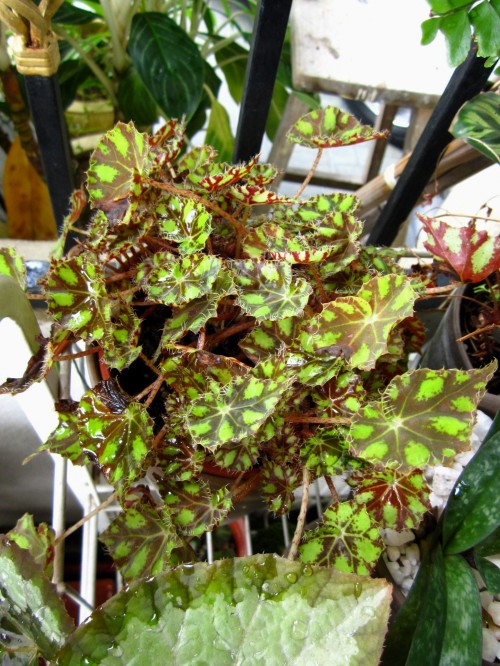
Begonia 'Tiger Kitten'
In the next entry I will continue with discussion of the growing media and feeding of these ever-hungry plants. That, and the fun of having these plants in the garden will constantly keep your vision immersed in splashes of colours after a long day at work. That is, if I remember to do my watering in the morning before leaving the house!!


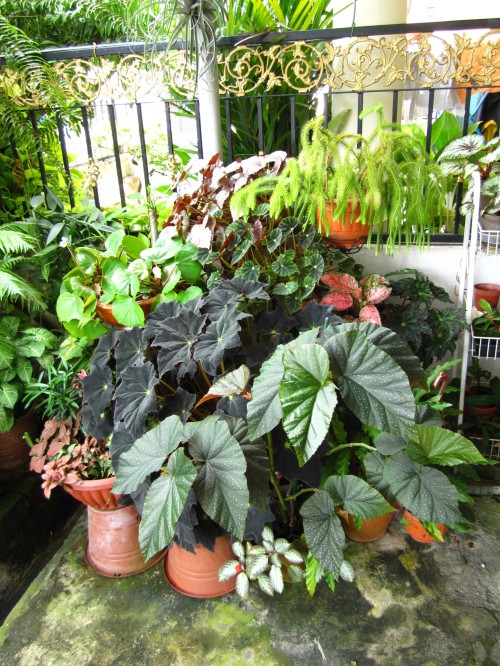
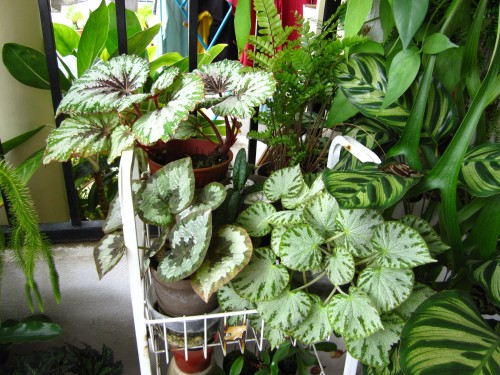
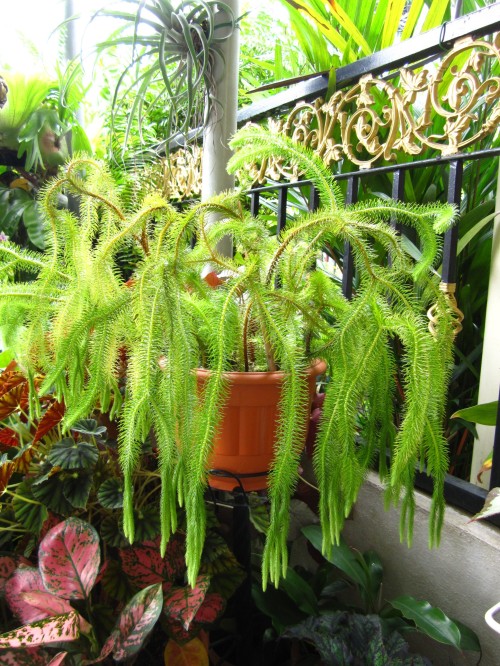

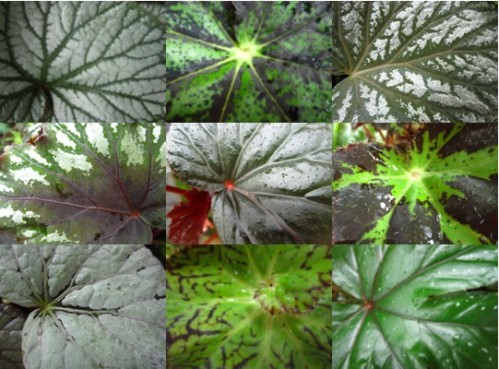
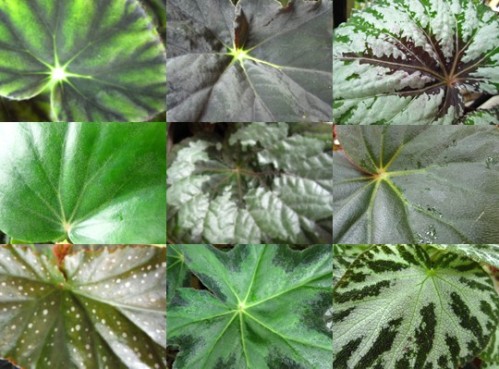
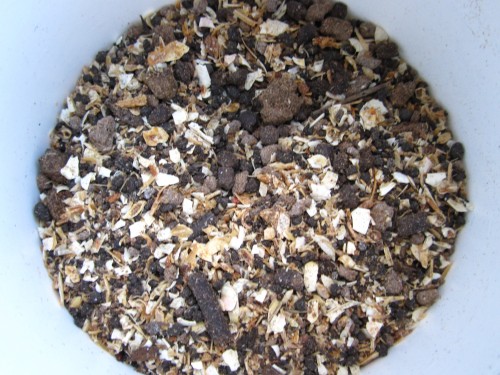
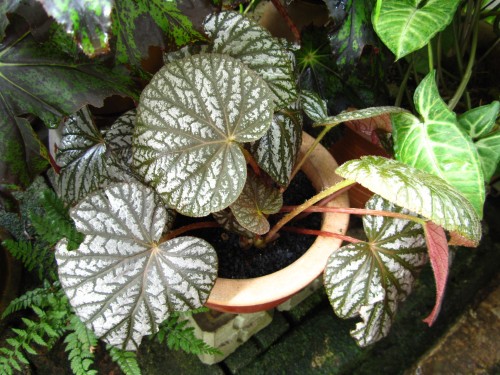






















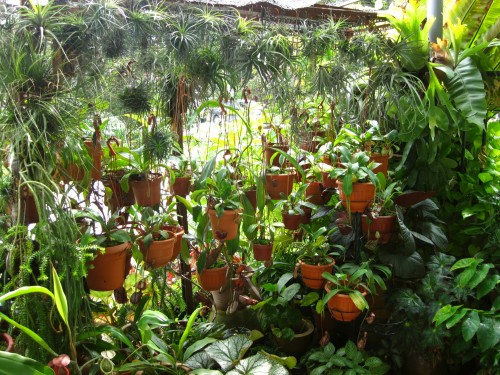

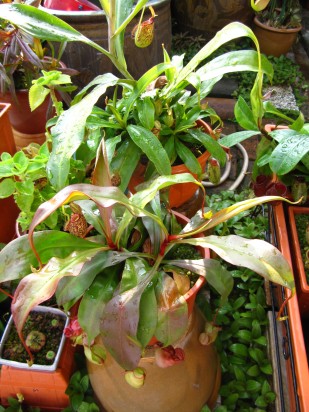

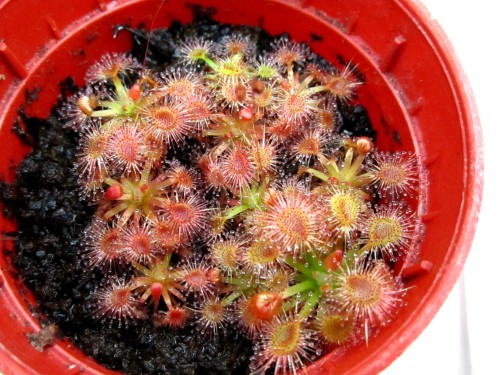

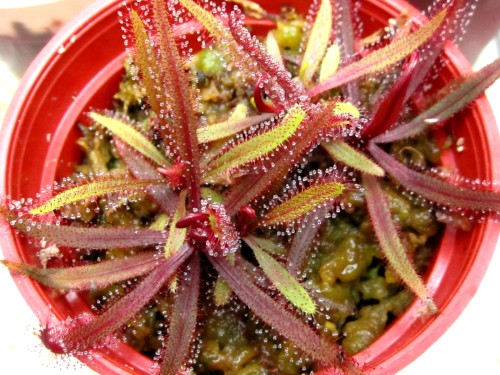
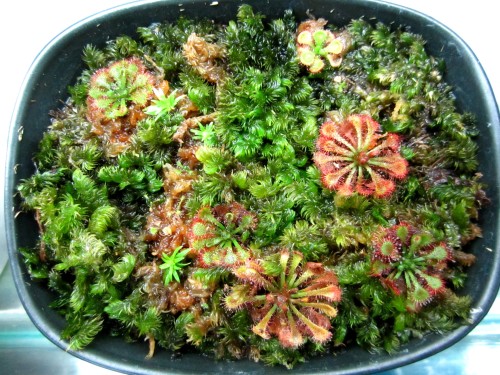

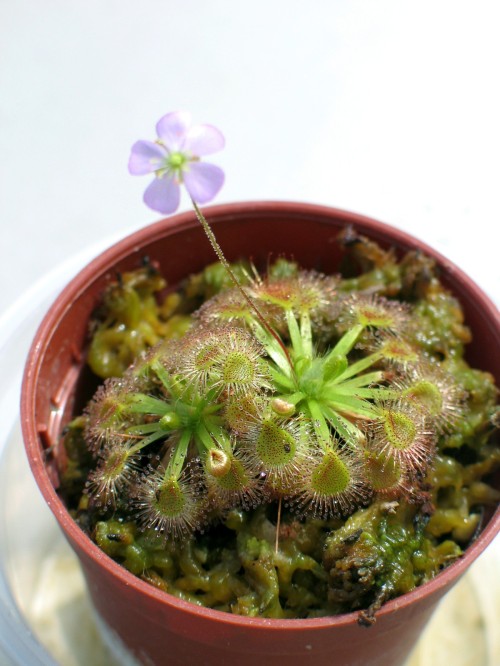
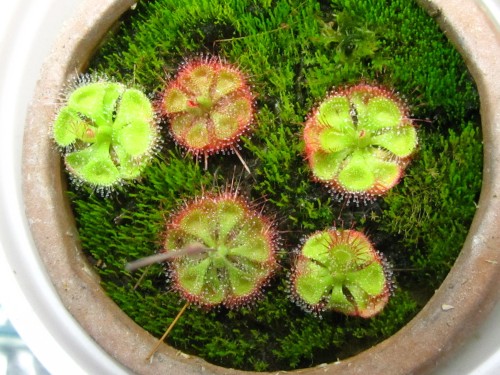
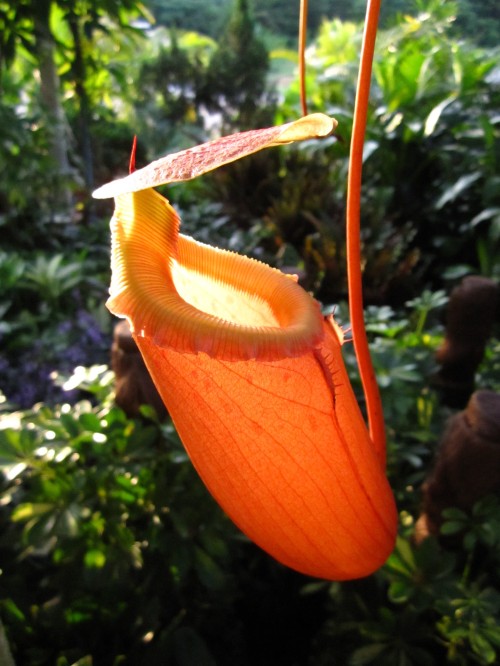
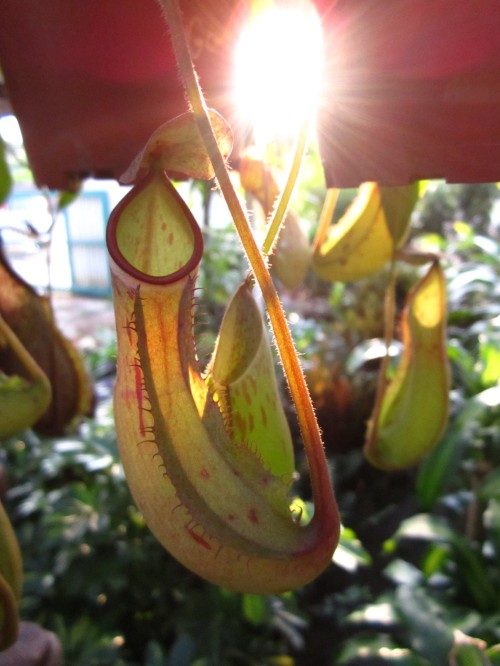
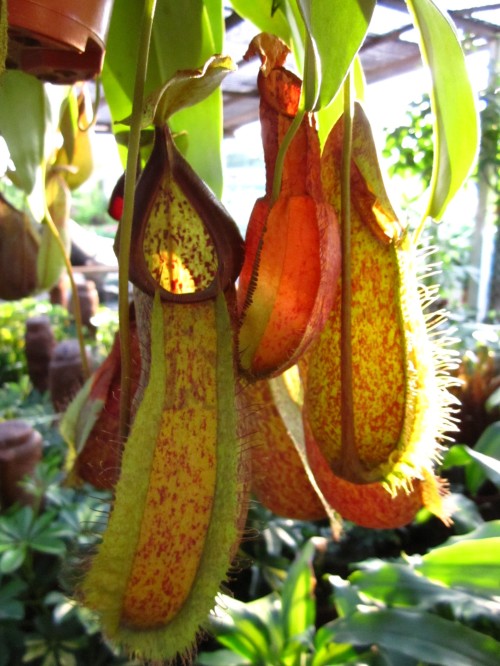
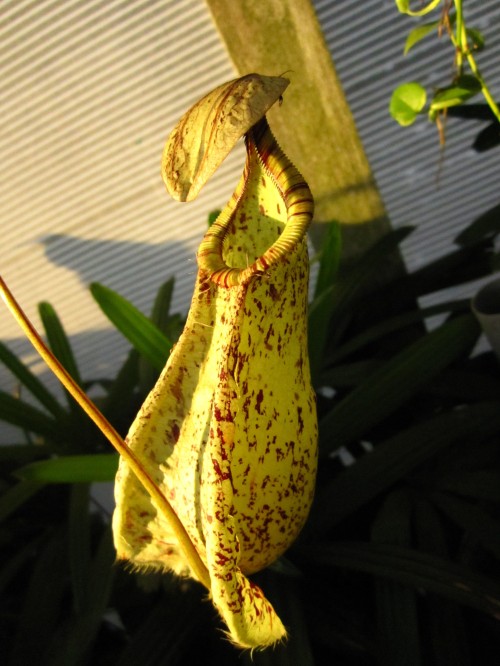
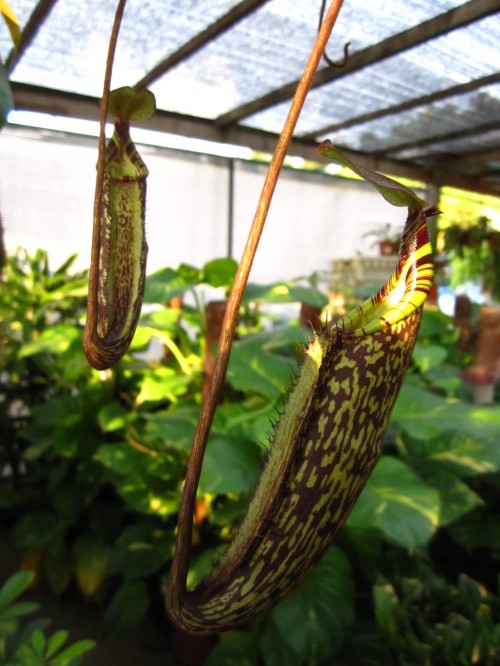
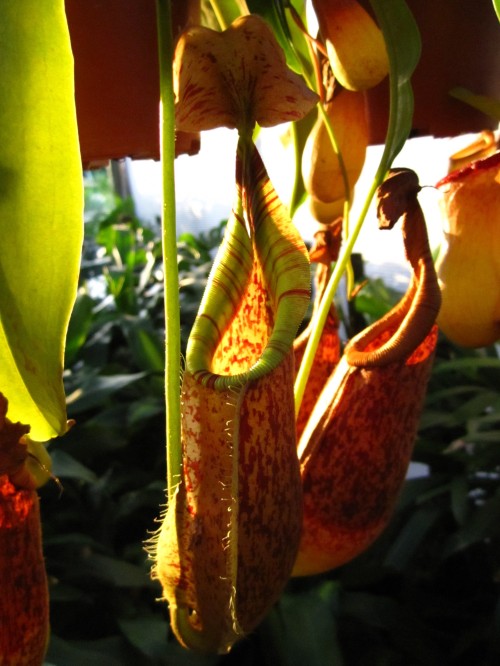
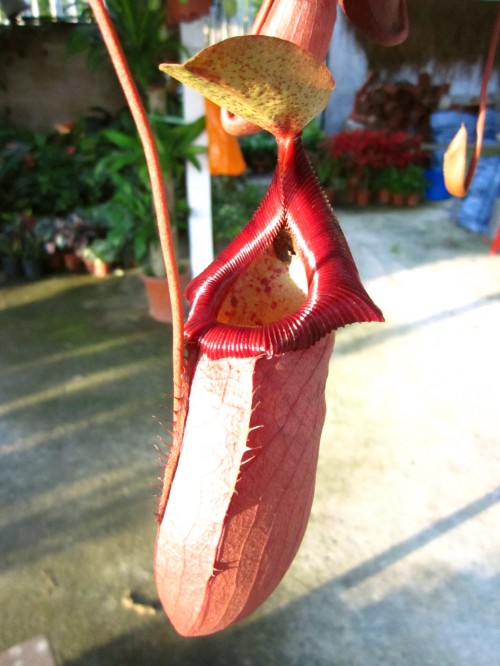
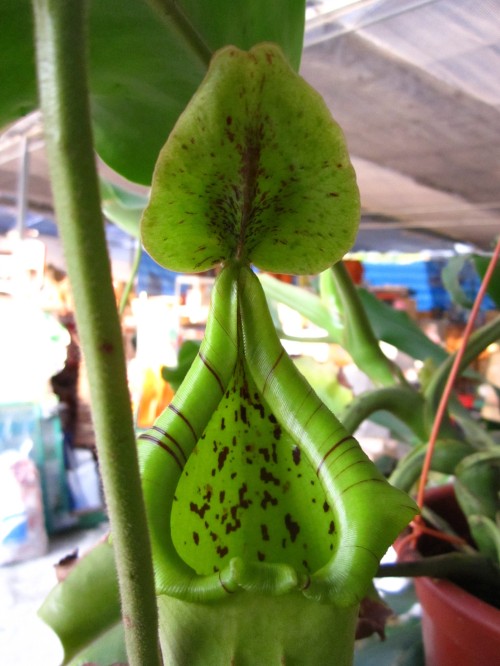
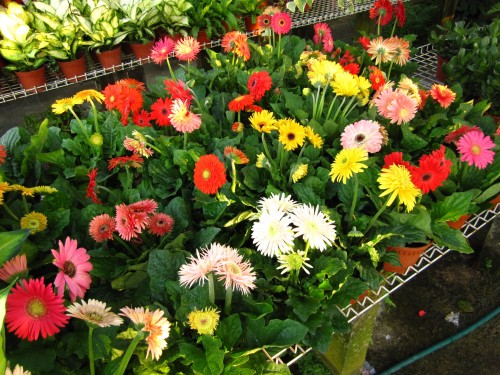
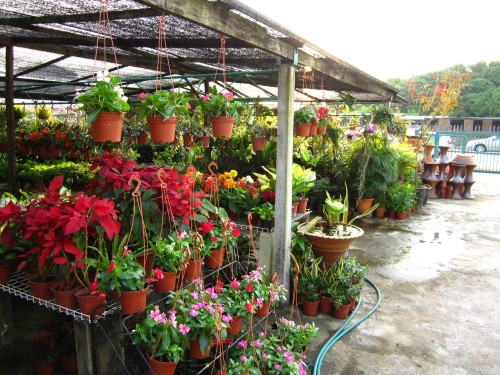



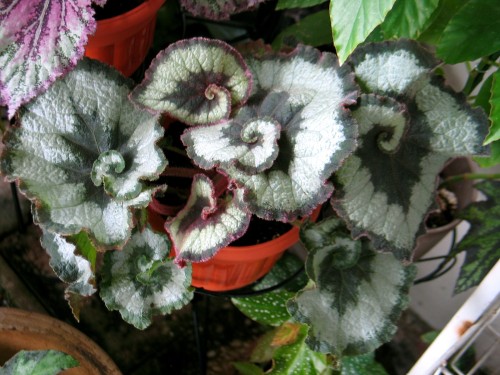
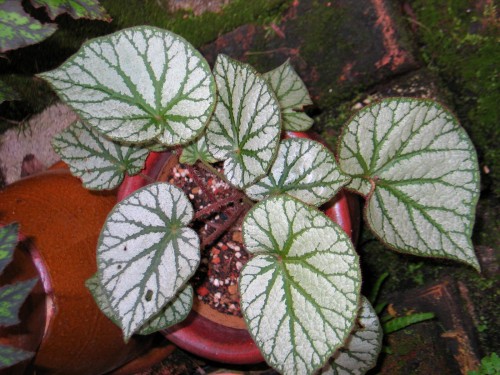
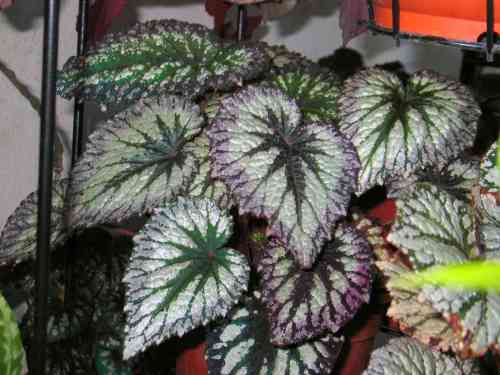
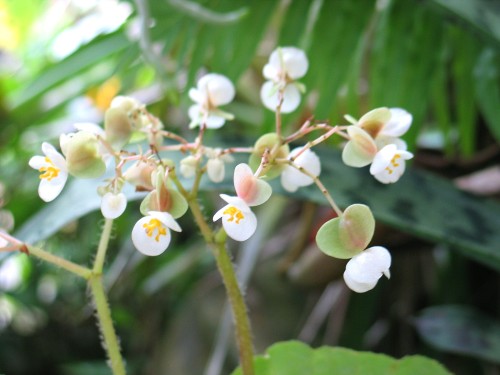
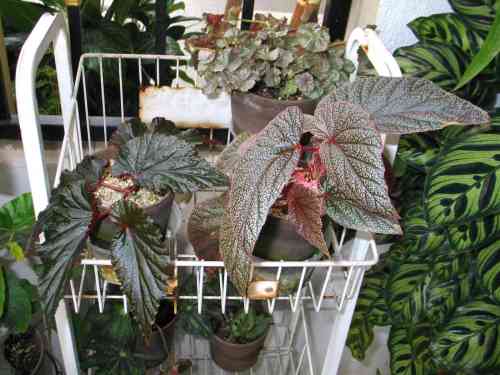

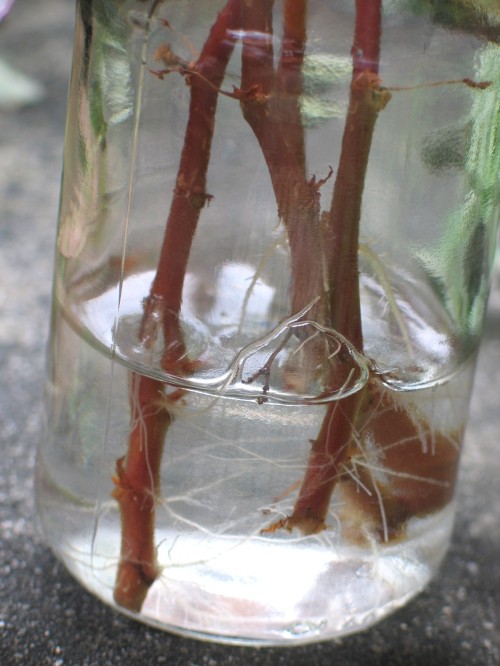

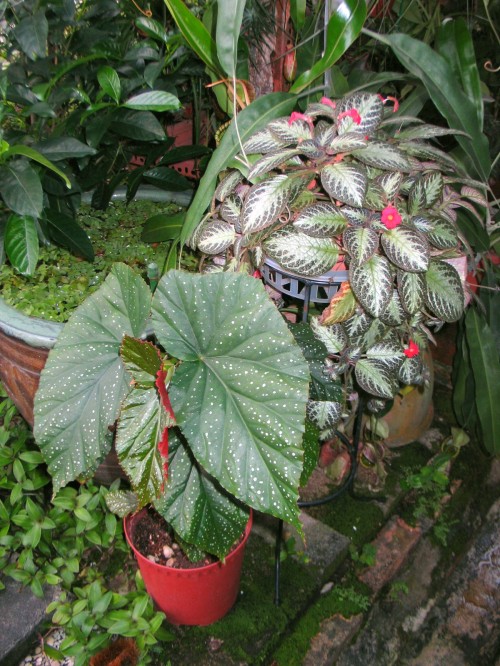
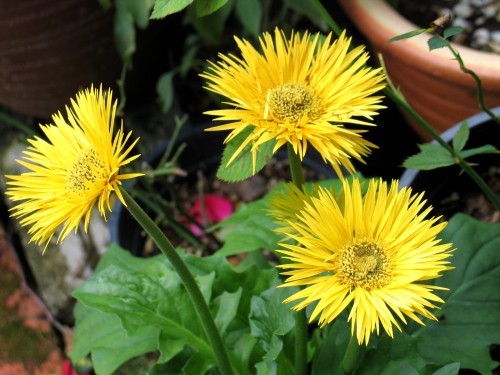

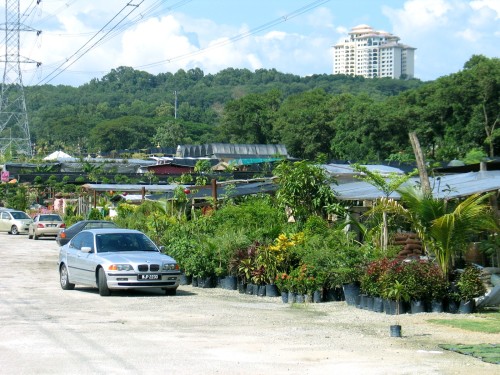
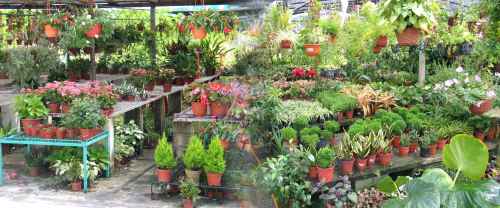

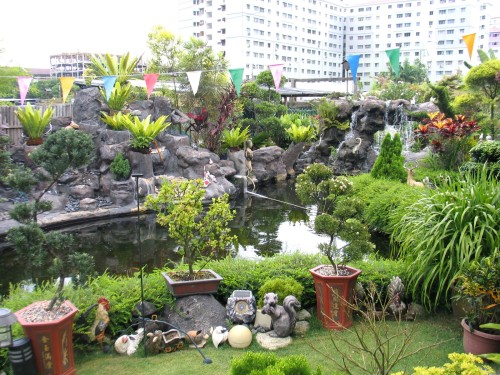
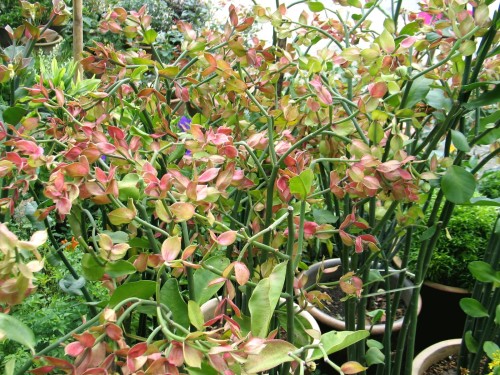
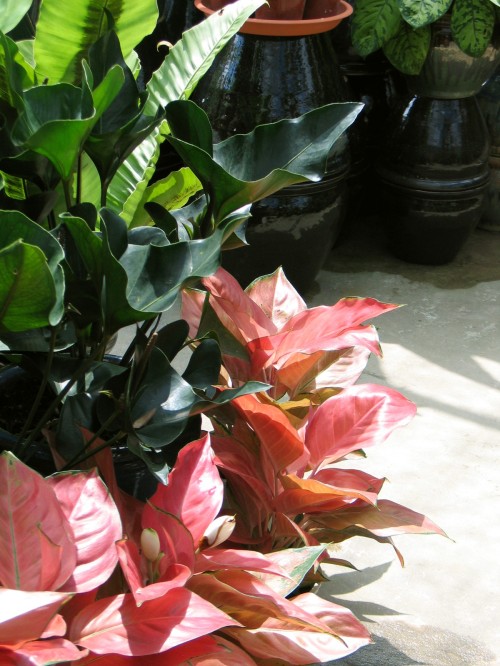
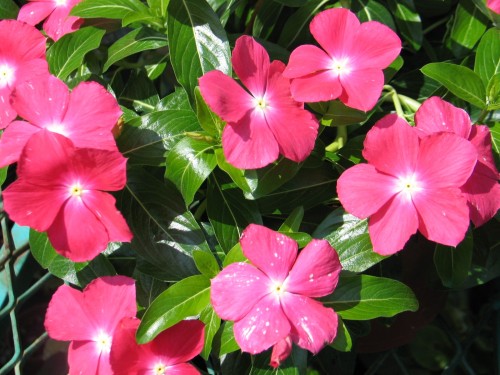
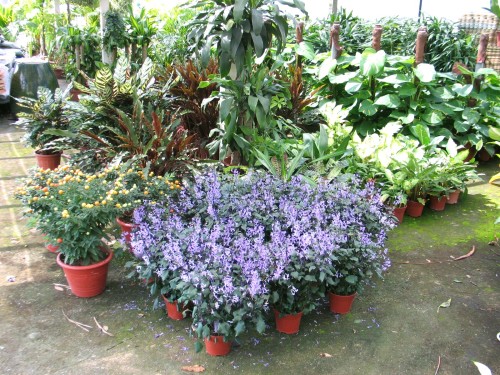


You must be logged in to post a comment.